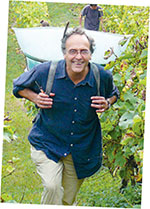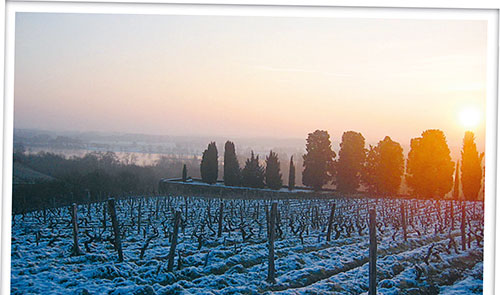

Nicolas Joly is one of France’s foremost authorities on biodynamics and founder of the wine growers’ association La Renaissance des Appellations (see “Where and When: Grower Associations,” pages 120–21). Author of multiple books, he is also a leading advocate of spontaneous fermentation and indigenous yeast. He owns the 900-year-old vineyard La Coulée de Serrant, in the Loire.
“Every planet is linked to a tree type. Birches, for example, are Venusian. Stand next to a birch and it’s not like standing next to an oak. It’s not rigid. It’s not massive. It doesn’t shout, ‘I’m here’ or climb over others. Instead, the birch is extremely supple, ever-changing. If you look at the shape of a birch, it almost looks unfinished. It is not final like the cypress, for example, that explodes in the shape of a candle flame. The birch is not demanding and grows easily just about anywhere.
Someone once told me, ‘If you want to understand what Venusian means, imagine that you have people in your home and everyone is speaking animatedly. All of a sudden a quiet person discreetly enters the room and places a cup of tea in front of each guest, saying, “I thought you might like some refreshment.”’ That’s a Venusian approach. Softly. Sensitively. Simply. It’s feminine energy.
When you collect birch sap, you’re collecting the essence of spring. The reawakening of the new beginning, when everything is bursting into life. Drinking it, therefore, is a real act of rejuvenation, which is why people like Weleda use it in so many therapies. It is quite a common tree, so anyone can have a go at extracting the water for themselves. Just remember to do it with care and an awareness that you are nourishing yourself with the work of an elemental being.
HOW AND WHEN TO HARVEST
Birch water is the spring of the leaf. It embodies the very beginning of the cycle, the moment before bud burst, before the sap becomes leaf. It’s the moment when, if you feel carefully, you can sense that nature is on the move, but nothing is quite visible yet. That’s your window of opportunity. You have 10 to 20 days (ideally when the moon is rising) during which the birch sucks up a massive amount of water from the ground, drawing it upward in its sap toward the burgeoning leaf buds that are not yet visible. This suction creates extraordinary pressure, which is when you can harvest. Dates vary enormously. At ours, it is usually between February 20th and March 4th.
You’ll need a little wooden hand drill, about 5mm wide, a large empty water bottle, and a clear syphon hose, like the sort you’d find on a lawnmower’s carburetor. The hose needs to be the same diameter as the drill, so you’re better off buying the hose first and the drill second.
Pick your spot, and pierce the bark a maximum of 2cm deep. You’ll know soon enough if you’ve picked the right moment. The tree will be ready to burst with the pressure of the water, so your little hole will drip right away.
Stick one end of your hose in the hole and the other in the empty bottle, strapped tightly to the tree. When the birch is in full swing, you’ll have to stop by once a day to empty the bottle. I collect up to 1.5 liters a day.
What you have to bear in mind is the importance of respecting the tree. If the first hole you drill doesn’t seem to give, don’t drill another. You might be too early in the season, so come back regularly to check. The sap was destined to become leaves and it is an exhausting process for the tree. If you take a little for your own consumption, that is fine, but you can’t push it without causing damage. One hole per tree, never more. You’re better off not making any holes unless the process can be supervised from start to finish as, once it is flowing, you can’t block the hole. It will flow until it has amassed enough water for its leaf-creation process, which can take three weeks. So, once you start, you can’t stop. You will have to harvest daily, much like milking a cow.
When the flow does stop and the bark is dry and free of humidity, which happens naturally at the end of the process, remove the hose and the tree will heal itself. However, as a symbol of gratitude, you can help the tree by using a little pine tar (also called Stockholm Tar) to plug the hole. You only need a tiny amount, about the size of the tip of a ballpoint pen, so don’t buy the synthetic rubbish, which will harm the tree. Once done, thank the tree and, remember, you’re dealing with a living being.
I collect about 30 liters per year. It keeps for months, especially in the fridge. Drink a glass a day on an empty stomach, first thing each morning, at the dawn of your daily spring.”

A Coulée de Serrant vineyard in winter.